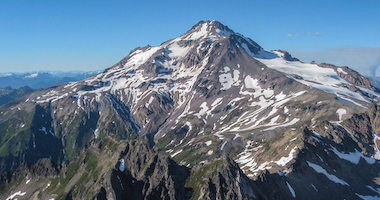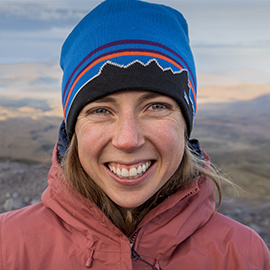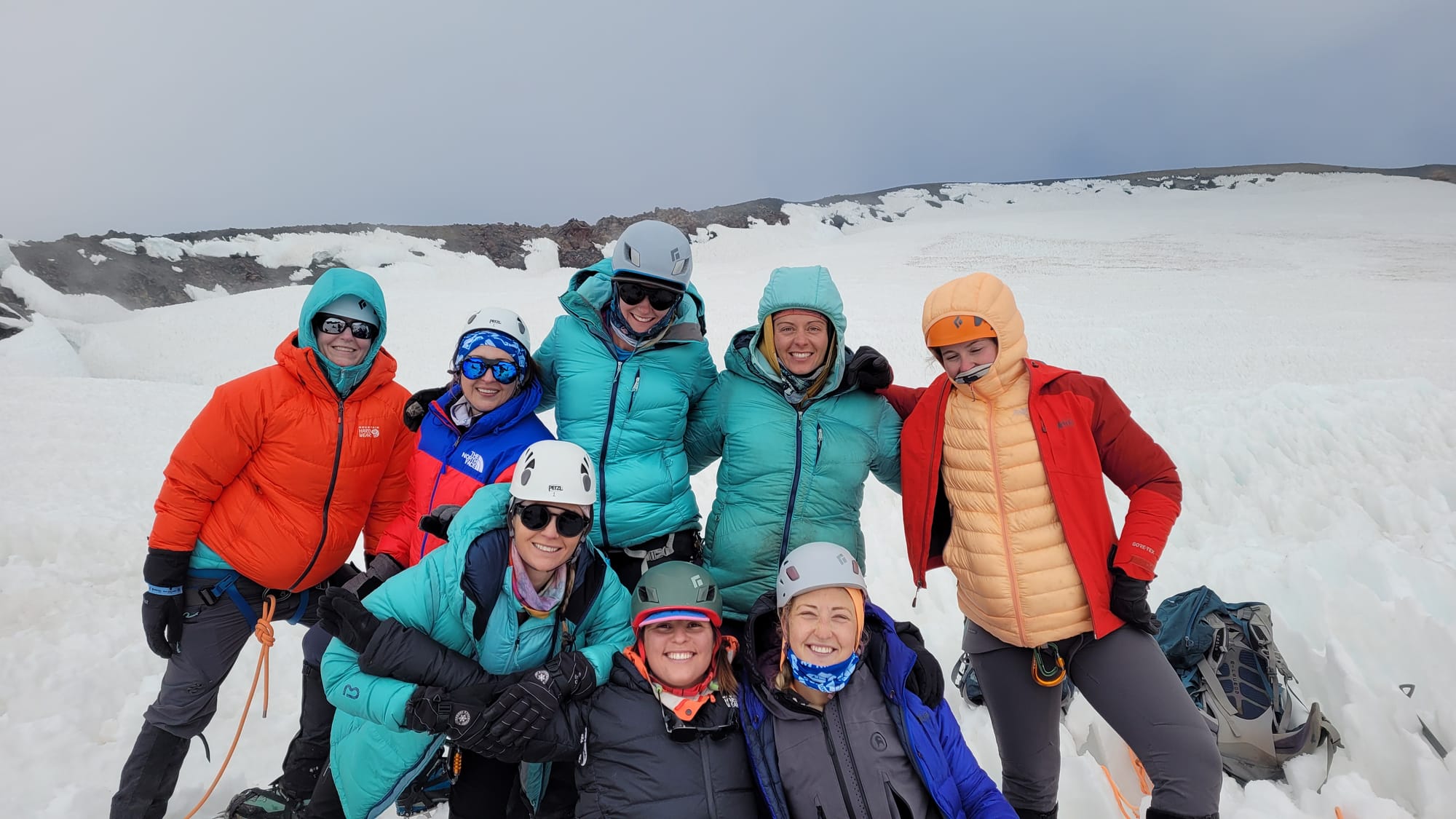This blog compiles tips and tricks from fellow menstruating guides and adventurers on managing bleeding in the backcountry. Its goal is to help you and others when Mother Nature comes calling in the wild.
Managing flows in the backcountry
Getting your period in the backcountry can be another thing to manage amidst an already complex environment. Coming prepared even if you don’t think you will have a period is the key to success when bleeding in the backcountry (check out the list for the backcountry period kit below). It is also essential to have the mindset of “embracing leaks and free bleeds” while in the backcountry and giving your body space to not be judged. Having the right products and preparation can make an already hard task a little bit less stressful.
Packing out waste from the backcountry is essential, and period product waste is no exception to this. You will ideally want a separate bag for period waste which can just be a gallon zip lock, dog poo bags or a designated reusable plastic bag (like a Pack-in-pack out bag) can work well but anything that can be sealed up and combine your waste to throw away later is all you need. A pro tip for this is to put duck tape around a zip-lock and sprinkle in a bit of baking soda so that the contents are hidden, and the baking soda can help mask the smell.
Backcountry Period Kit
- preferred menstrual device or combination (cup, disc, underwear, pads, tampons, etc.)
- extra emergency tampons and/or pads
- wipes
- Hand Sanitizer
- Toilet Paper
- waste bag
- Medications
- water bottle or peri-bottle
- extra undies
Be sure to keep it all in a waterproof bag!
Menstrual Flow Devices
There are a variety of menstrual devices that can help out in the backcountry.
Menstrual Cups
- Backcountry Pros: Reusable, less waste to carry out, and can stay up to 12 hours at a time.
- Backcountry Cons: It can be a little messy to use when changing, and leaks can happen, so extra undies are key, and it’s important to sanitize cups before use.
- Recommended Brands: Diva Cup, Lunette Period Cup, Cora
Menstrual Discs
- Backcountry Pros: Discs are similar to cups in that they are reusable, can be worn for up to 12 hours, and create less trash to carry out of the backcountry.
- Backcountry Cons: Discs occasionally leak or can self-empty/auto-dump. They must also be sanitized before use and can be messy when changing.
- Recommended Brands: Saalt Disc, The Flex Company
Period Underwear
- Backcountry Pros: Period underwear is a great alternative to a pad and can be worn for 8-11 hours straight. It is perfect to pair with a cup or disc in case of leaks.
- Backcountry Cons: They can only be worn once before they need to be washed, so carrying them out of the backcountry can be a challenge.
- Recommended Brands: Thinx, ModiBodi, Saalt
Tampons
- Backcountry Pros: Tampons are reliable and great always to have backups of. Tampons without applicators are recommended for the backcountry since they create less waste.
- Backcountry Cons: Tampons create a lot of waste, which you must dispose of later. In addition, ensuring you have enough for your flow in the backcountry is essential.
- Non-applicator Brands: LOLA, Cora
Reusable and Disposable Pads
- Backcountry Pros: Pads, whether disposable or reusable, are great options for pairing with other menstrual products and are comfortable to wear when sleeping.
- Backcountry Cons: Pads are likely to be the heaviest and bulkiest products. Like tampons, it’s vital to ensure you bring the right amount.
- Reusable pad Brands: Kula Pad, Kinx, The Brand Hannah
Tips to Managing Period Cramps in the Backcountry
Chances are you’re one of the 85% of menstruators who experience period cramps in their lifetime. Period cramps are caused by prostaglandins (natural chemicals in the body) that cause the uterus to contract and become inflamed during menstruation as your uterus sheds its lining. This can be a very uncomfortable experience for menstruators anywhere in the world, especially in a mountain element.
Some tips for cramps are:
- First, understand and know how to manage cramps in the front country. If you can manage your cramps in the comfort of your home, you can manage them from the walls of your tent.
- Hot water bottle! The lifesaver of cold toes and period cramps in the backcountry. A hot water bottle on your uterus can help relax the muscles responsible for cramping.
- ‘Backcountry acupressure’: Although proper acupressure is administered by a professional, you can help soothe your period cramps by applying pressure to your uterine area, either with your hand or by changing positions, such as lying on your stomach or in Child’s yoga pose.
- Hydration and nutrition: Period cramps result from inflammation in the uterus. Eating an anti-inflammatory diet and staying hydrated during your trip and while in the mountains can help reduce cramps. Snacks such as nuts, dried fruits, chamomile tea, dark chocolate, and dairy-free snacks can also help decrease cramping intensity.
- Exercise: Although moving sometimes feels like the last thing you want to do when bleeding, movement also reduces inflammation by improving blood flow and bringing more oxygen to your muscles.
- Pain relievers: Sometimes the easiest and best solution to managing cramps in the backcountry can be taking pain relievers. Over-the-counter pain relievers or pre-prescribed meds from your doctor are important to carry with you.
- If you have severe or debilitating cramps make sure to check with a healthcare professional before going into the backcountry. Periods aren’t easy, but they shouldn’t be debilitating. There is most likely another underlying condition such as Endometriosis or Polycystic Ovarian Syndrome (PCOS).
Knowing your Flow
Your cycle is important for your body’s general health but can also play a role in helping you decide when is the best time to climb Mount Rainier or plan to go to Kilimanjaro for example. Although life doesn't always align perfectly with our cycles, it can be a good starting point for understanding when your body is most ready to try hard and needs more rest. Planning your trip to avoid the week of your period or times when you might feel more energy-deprived in your cycle can be a great way to avoid the stress of periods in the mountains and feel your best when tackling big objectives.
That said, not everyone who bleeds gets their flow like clockwork every month. Unexpected arrivals can often happen when your body is in a new environment with different routines, stress, lack of sleep and a change in nutrition can also alter monthly flows so if yours is late or comes earlier than normal don’t be alarmed it is just your body adjusting to your new reality.
For many, getting periods isn’t all that common due to IUD and other types of hormonal birth control, irregular cycles, or health issues which can be a nice way to not have to worry about flows in the backcountry. However, it’s highly recommended to still go into the backcountry with a period kit or some kind of backup solution just to be on the safe side especially if you get occasional bleeds or spotting.
Stigma and Embarrassment
Every month, 1.8 billion people across the world menstruate. Being a menstruator and having a period can often feel like a curse especially if you are someone who likes to spend time outside away from access to running water and a clean bathroom.
Societyy and history have made us believethat menstruating is nothing to be embarrassed about. However, havingg a period is something to be proud o. Practitionerss oftenrefer to ito as a sixth vital sig,s an indication thatone'sr body is healthy.
Backcountry and expedition environments tend to be steeped in masculinity, which can make having a period in these places extra uncomfortable.
Not wanting to have blood shown in the bathroom area, or leaking down your pants, not having anyone around who knows the pain of period cramps, the energy drain, or the mental fog that periods can bring with them can be exhausting and hard to communicate. Not wanting to be seen as the ‘weak link’ to the team because you're on your period is a real feeling. However, know that even though you may feel very alone in the moment, you aren’t, and that many menstruators have been in the same place as you. Don’t be too hard on yourself if you don’t feel 100% or can perform as well as you have been; your body is under much more stress when you have your period in the mountains, and you will respond accordingly.
You’ve Got This!
Knowing your cycle and how you best manage it can be a very personal journey and often comes from trial and error. Being prepared with a period kit can take a lot of stress off of you when your flow arrives on a backcountry trip. If you are comfortable, let someone in your group know that you’re on your period and what you might need in those days in the mountains. Healthy periods aren’t easy but shouldn’t be completely debilitating, and you can still accomplish hard things while you’re bleeding. Most importantly know that you’re not alone, periods although sometimes messy and annoying, are a very healthy part of your body. So be patient with yourself and remember that “anything they can do, you can do bleeding…”!
















